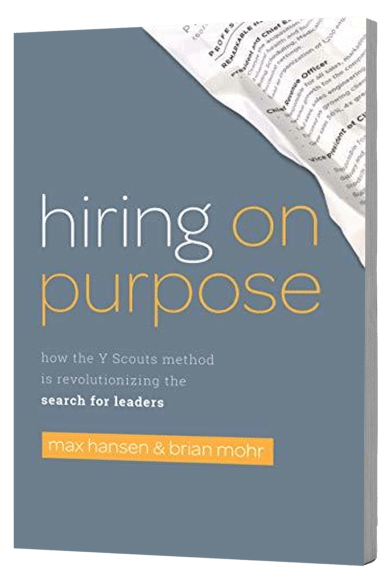Finding and hiring the right leader for your company is one of the most important decisions any organization can make. The leader sets the vision, culture, and trajectory of the company. A mis-hire in the leadership role can lead to confusion, low morale, and lack of progress.
Luckily, the book “Traction” by Gino Wickman provides a practical framework for leaders to gain momentum in hiring, developing leadership, and creating an aligned team.
In fact, our business here at Y Scouts runs fully off of the Traction EOS framework (Entrepreneurial Operating System).
EOS is an operating system to run your business, consisting of six key components: Vision, People, Data, Issues, Process, and Traction.
Let’s explore how Traction can help with hiring your next leader.
Table of Contents
ToggleVision

The vision component of Traction involves defining your company’s purpose, core values, target goals, and strategies. When hiring a new leader, you need someone who embraces, exemplifies, and can clearly communicate your vision to the team.
During the interview process, vet candidates on their ability to understand and get behind your company’s vision. Ask questions like:
- What is your interpretation of our company’s vision and purpose?
- How would you communicate the vision to inspire the team?
- How do our core values resonate with you as a leader?
Look for leaders who quickly grasp your vision and have ideas for building upon it.
People

The people component is about having the right people in the right seats. When hiring a leader, you want someone who can evaluate, coach, and develop your people.
Ask candidates about:
- Their experience building high-performing teams
- Have them describe their management style
- Look for leaders who value collaboration, develop employees based on strengths, and hold people accountable
A leader should be able to analyze your Accountability Chart and People Analyzer (found in Traction) to optimize your organizational structure. At the end of the day, they should have experience and a proven track record for getting the right people “on the bus”.
Data

The data component involves identifying the key metrics and scorecard to track performance. Your leader should understand how to leverage data and metrics to guide the organization.
Gauge if a candidate has experience:
- Identifying and managing key performance indicators (KPIs)
- Do they grasp the metrics most vital to your business?
- Can they give examples of how they’ve used data to drive business decisions?
You want a leader who is data-oriented and will use your scorecard to regularly measure progress.
Issues

Every company faces issues that need to be identified, prioritized and solved. When conducting interviews, assess how a candidate approaches problem-solving.
Present them with sample issues your company faces and observe their process for addressing issues.
- Do they ask clarifying questions?
- Can they drill down to root causes?
- How would they involve the team in solving issues?
Look for leaders who can clearly define problems, lead brainstorming, and drive issues to resolution. They should collaborate but remain decisive when needed.
Process

The process component involves documenting your systems and processes so everyone functions efficiently. Your leader should be able to analyze, optimize, and train employees on processes.
Ask about:
- Their experience designing, documenting, and implementing processes
- How have they improved processes in past roles?
- Do they value consistency and quality in process execution?
You want a leader who can assess your core processes, eliminate bottlenecks, and help employees work within an effective system.
Traction

Gaining traction means ensuring consistent forward progress on goals. When interviewing, assess if candidates have the discipline to translate lofty vision into actionable plans.
- Can they break long-term goals into 90-day action plans?
- How have they motivated teams and held them accountable in past roles?
- Do they have the right balance of patience and drive?
Hire leaders who can outline next quarter’s rocks and use tools like the Level 10 meeting to maintain team discipline. They should have a proven ability to execute.
Conclusion

Hiring a new leader is challenging, but using Gino Wickman’s Traction model as a guide can help surface the best candidates.
Vet them thoroughly on:
- Vision
- People
- Data
- Issues
- Process
- Traction
Look for leaders who quickly grasp your business, have strong management skills, and can execute well.
This will set you on the path to finding the ideal leader to take your company to the next level.



